Provided you can get past Microsoft’s infuriatingly terrible Xbox account management system and get its incredibly user-unfriendly sign-in process to work, the Xbox Game Pass is a pretty sweet deal. Starting at $4.99/month for the PC-only option, the service includes unlimited access to hundreds of games, and if you spring for the premium package at $14.99/month, you get Xbox Live Gold and all of its associated perks, too.
A little while ago, we wrote about a dozen of the best games on PlayStation Now, and although we stand by that list, we also think that the Xbox Game Pass has a better selection of games overall. In fact, it took a little while to whittle down the list of our favorites to just twelve.
You may notice that our top picks are mostly M-rated titles; for whatever reason, the current lineup on Xbox Game Pass is similarly disproportionate, so this is a representative sample. Let’s dig in! By the way, if you don’t yet have an Xbox One and are wondering which model to get, check out our guide to the Xbox One S vs. Xbox One X.
Note: The Game Pass games for PC are different and fewer in number than those offered for Xbox consoles. At this time, console players have access to roughly twice as many games. View the full lists here.
#1 Devil May Cry 5 (Console Only)
Compared to its predecessors, Devil May Cry 4 was just okay, and the Devil May Cry reboot by Ninja Theory really turned off a lot of longtime fans. Devil May Cry 5, though, is just the breath of fresh demon-blood-tinged air the series needed.
Gameplay
Devil May Cry has always been known for its hyper-fast gameplay, brutally uncompromising difficulty, and explicit appeal to the hardcore crowd. Although the hardest available difficulty setting in 5 doesn’t really compare to Devil May Cry 3’s hardest mode, it’s still quite challenging, and the easier modes are more accessible to casual players than ever before.
Throughout the game, you’ll play as three different demon hunters, each with completely different abilities and combat styles to master. (Spoiler warning: V sucks from beginning to end, but Dante and Nero are both amazingly fun.) Nero uses his classic Red Queen sword and Blue Rose revolver, as well as detachable arms called Devil Breakers that bring a ton of variety to combat.
Dante specializes in quickly switching between many different weapons and his signature Trickster, Swordmaster, Gunslinger, and Royal Guard fighting styles. V stands in one place and automatically destroys everything on the screen when you mash the same two buttons a trillion times. (See why he sucks?)
The non-V combat in Devil May Cry 5 is ridiculously fun, and the boss battles are especially satisfying. Each character has a unique Devil Trigger ability that supercharges them for a short period of time. (Dante’s Sin Devil Trigger, unlocked late in the game, is particularly powerful and rewarding to use.) There are a total of 20 missions, but they’re intended to be played multiple times across ever-increasing difficulty levels, and most of them are just as fun the fifth time through as they are the first time.
Graphics
Devil May Cry 5 is a gorgeous game. Its character models are wonderfully lifelike and the motion capture work is stunning, although roughly half of the missions take place in areas that are rather drab, repetitive, and boring to look at. Still, you’ll spend most of your time whalloping demons, not staring at the walls, so we wouldn’t call the boring environments a deal breaker.
Story
In Redgrave City (which totally isn’t Raccoon City), an enormous and sinister-looking tree has appeared and started spewing demons from its roots. Dante and his protégé Nero are hired by V, a leather-clad emo dude who is entirely too skinny, to investigate and destroy the tree—but inside, they find a lot more than they bargained for.
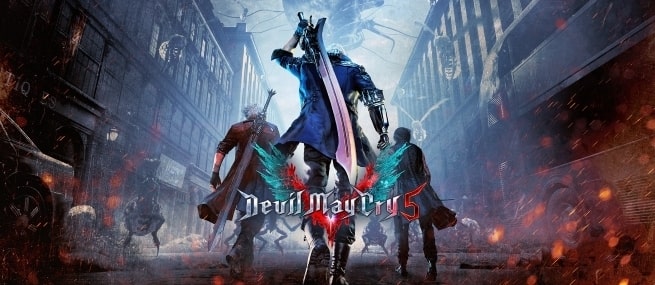
The writing is about on par for a Devil May Cry game. The plot is a fairly standard “demon hunters versus demons” scenario, but it’s wrapped around a nugget of mystery that, while far from mind-blowing, is intriguing enough to keep you invested and guessing for a while.
Coop/Multiplayer
Devil May Cry 5 is a single-player game. In a few missions, you’ll play alongside random other players that happen to be online, but you can’t directly interact with them. It’s more of a novelty than a true coop mode.
Overall Review/Final Thoughts
Hands down, Devil May Cry 5 is the best action game of 2020. If you’re even remotely interested in games that revolve around fast-paced combat and stylish combos, you have to play it.
#2 Alien: Isolation (Console Only)
There have been many Alien games throughout the last few decades, but none of them even come close to Alien: Isolation in quality.
Gameplay
Nearly every Alien video game ever made suffers from one fatal flaw: turning the titular aliens into completely un-intimidating cannon fodder. Alien: Isolation sets that injustice right by pitting you against a single, highly intelligent, nigh-invincible predator and leaving you with little more than your wits to survive.
While it’s possible to drive the alien away temporarily, it will always come back, and it can’t be killed. The developers’ decision to make the primary antagonist invincible was a controversial but brilliant one. Fire is the only thing that the alien is truly afraid of, but flammable resources are scarce. Most of the time, you’ll have to evade it, and the way you do that is truly what makes this game shine.
You’ll have to carefully balance your speed, noise level, and the assertiveness of your actions. Move too slowly or hide too often, and the alien will figure out what you’re up to and sniff you out. Make too much noise or push forward too quickly, and you’ll certainly draw its attention—and once it’s detected you, escape is unlikely.
To succeed, you’ll have to move at a medium pace and constantly change up your tactics, because if you consistently favor the same ones, the alien will catch on and ruin your day. Hiding, running, crafting weapons, creating distractions, finding alternate paths, and using human enemies to bait the alien are all strategies you’ll need to employ to escape the space station alive.
Graphics
Creative Assembly, the developers of Alien: Isolation, obtained nearly all of the data used in the production of the original film and took great care to honor its legacy. You’ll spend most of the game on the partially decommissioned space station Sevastopol, which is wonderfully detailed and consistently faithful to the film’s unique 1970s future aesthetic.
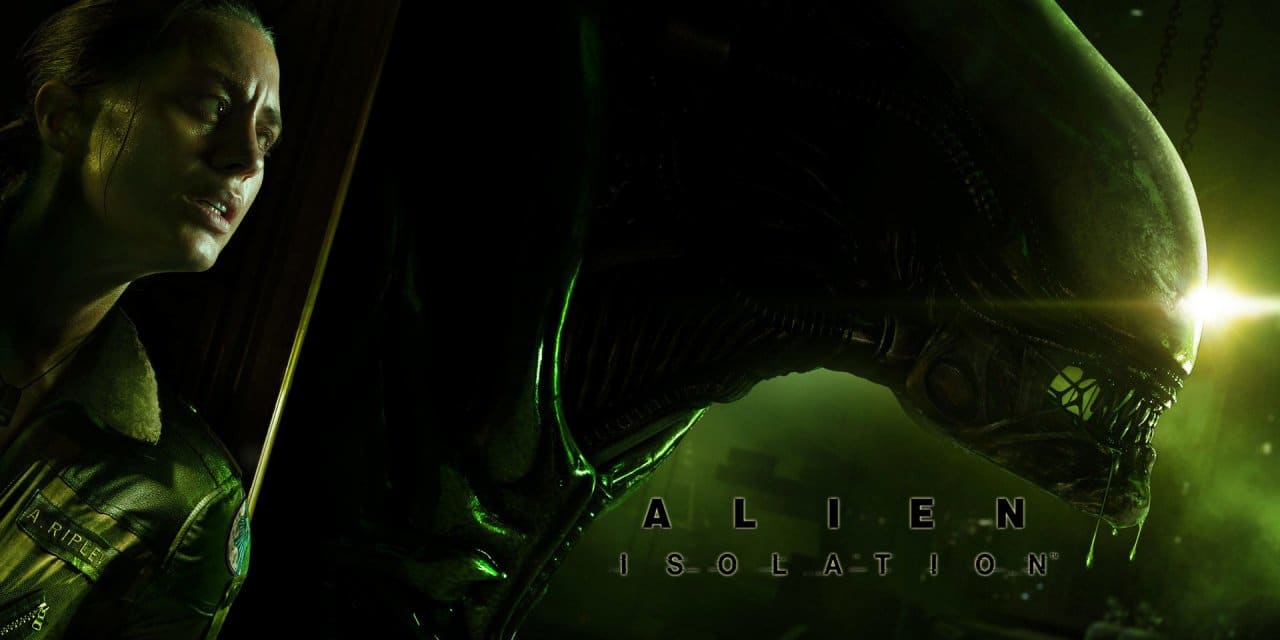
The alien looks horrifying and is a fluidly animated embodiment of lethal grace. Excellent use of lighting rounds out the whole package to make Alien: Isolation one of the best-looking horror games in recent memory.
Story
Set twenty-something years after the first film, Alien: Isolation puts you in the adorably tiny shoes of Amanda, Ellen Ripley’s daughter. She’s been searching for an answer to the mystery of her mother’s disappearance her whole life, and when the flight recorder from Ellen’s ship is finally discovered on Sevastopol, Amanda sets out to recover it, hoping it will provide answers.
Needless to say, she encounters the same kind of alien her mother tangled with and must escape with her life.
Coop/Multiplayer
Thankfully, there is no multiplayer component in Alien: Isolation. A multiplayer Alien game probably could be done well, but in past games, it’s been awful every time it’s been tried.
Overall Review/Final Thoughts
Make no mistake: Alien: Isolation is one of the greatest survival horror video games ever made, and it’s certainly the best Alien game of all time. If you like either of those things, Isolation is a must-play—and if you love being scared in general, check out our guide to seven of the best horror games.
#3 Deus Ex: Mankind Divided (Console Only)
Although Deus Ex: Human Revolution is arguably a better game, Mankind Divided is still definitely worth playing.
Gameplay
Equal parts RPG, action game, stealth game, and open-world narrative-driven cyberpunk thriller, Deus Ex: Mankind Divided scratches a lot of different itches, and largely succeeds in most cases. One of its biggest selling points is the fact that you can play the game in a number of very different ways: as a persuasive pacifist, a cybernetically enhanced killing machine, an undetectable stealth operative, or any combination thereof.
The game’s snappy controls and well-balanced integration of different systems make it a joy to play, even if (we think) its predecessor did most of those things just a little bit better.
Graphics
If there’s one area where Mankind Divided clearly wins over Human Revolution, it’s in the graphics department. That’s hardly surprising, though, given that it’s five years newer. Most of the game takes place in a European city under martial law, which is especially exciting to explore at night when it’s raining. The environmental art is particularly praiseworthy, and there are many distinct locations to keep the visual experience fresh.
Story
Two years after the events of Human Revolution, protagonist Adam Jensen is nearly killed when a train station is bombed by terrorists. At the end of the previous game, the world was sharply divided into pro- and anti-augmentation groups and some people on both sides are willing to use violence to advance their goals, so the list of potential suspects is a long one.
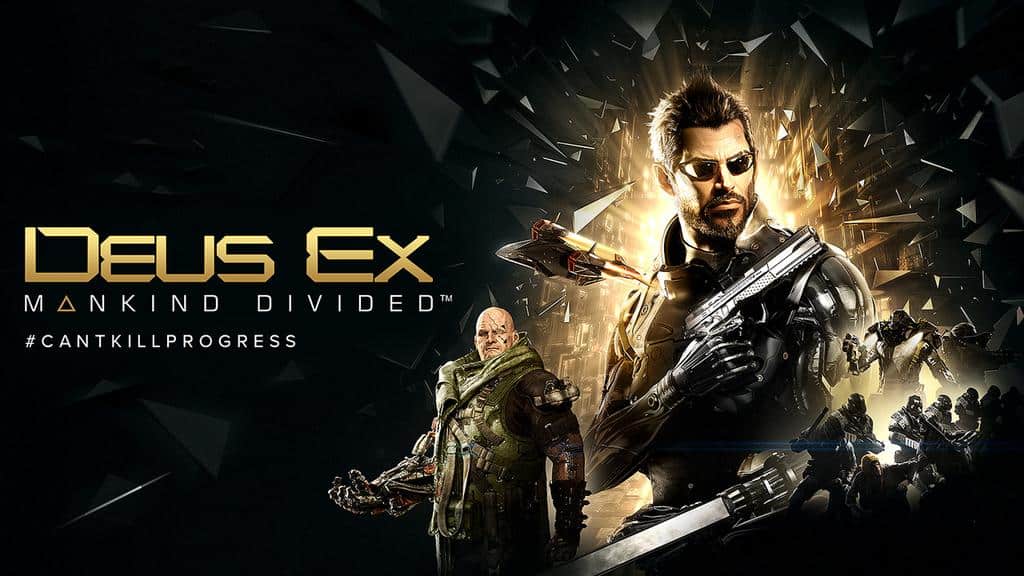
The game’s main story kicks off with an investigation into the bombing but soon unfolds into something much bigger.
Coop/Multiplayer
There are no multiplayer modes in Deus Ex: Mankind Divided.
Overall Review/Final Thoughts
Mankind Divided is a fairly long game with many branching paths, so it’s worth playing at least twice. Despite its myriad twists and turns, the story isn’t as deep or satisfying as Human Revolution’s, but it’s not bad. Its graphics and gameplay are surely its strongest elements, and both are fantastic.
#4 Fable Anniversary, Fable II, and Fable III (Console Only)
If you never had a chance to play the Fable trilogy on older Xbox consoles, you can still get around to them with Xbox Game Pass.
Gameplay
2004’s Fable was one of the first RPGs to focus explicitly on giving the player as many choices as possible (although Morrowind beat it by several years). In the first game, you’ll play as the unnamed Hero of Oakvale at various stages throughout his life, from childhood through his grizzled old-man years.
Various decisions you make throughout each game in the series—such as whether or not to play soccer with chickens—move you toward the good or evil ends of a morality scale, and your appearance and abilities will change accordingly. Fable II and Fable III both feature decently robust business systems that allow you to purchase houses and shops and generate income from them.
Across all three games, though, the core gameplay focus remains the same: you’ll spend the bulk of your time-fighting monsters and fulfilling your destiny as the savior (or tormentor) of Albion.
Graphics
All three Fable games are pretty old by now—even the newest one is from 2010—but don’t let their dated graphics stop you. Fable II and Fable III still look reasonably good, although the original Fable is noticeably older and blockier.
Story
The second game takes place 500 years after the first, and the third takes place 50 years after the second. You play as a different person—a grandchild of a grandchild in the same line of heroes stretching back to antiquity—in each one.
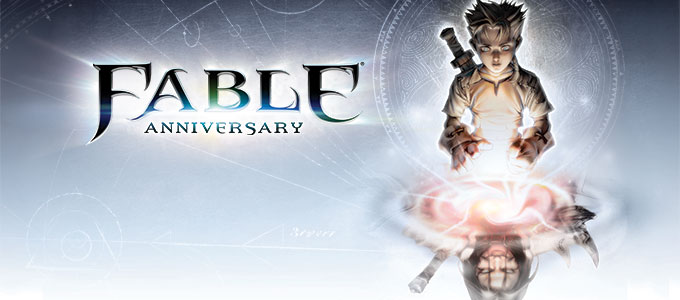
The writing isn’t especially deep or original in any of the three games, but it’s still better than Twilight (that’s admittedly a low bar). Play the Fable games because they’re fun to play, not necessarily because of the simplistic stories they tell.
Coop/Multiplayer
The original Fable is single-player only, but Fable II and Fable III both have two-player coop support for both local and online play.
Overall Review/Final Thoughts
The Fable games are simple, many people think they’re too easy, and they don’t have a ton of replay value, but they’re still super fun because of their varied quests and the high degree of freedom you’re afforded. They’re definitely worth playing at least once each. If Fable doesn’t quite do it for you, perhaps one of the seven best RPG games to play in 2020 is a better fit?
#5 Hellblade: Senua’s Sacrifice (PC and Console)
Hellblade: Senua’s Sacrifice could be considered a horror game in some respects, but even if you aren’t into those, consider giving it a try anyway. Its unique blend of genres and rich atmosphere form the core of a story that deserves to be told.
Gameplay
Hellblade is an atmospheric, narrative-driven experience first and foremost. There is ferocious and precise melee combat, but it’s not the central focus of the gameplay, and the entire middle third of the game has no combat at all. Much of Hellblade is spent solving environmental puzzles in the Norse- and Celt-inspired world of the dead, and most of them lean heavily on perspective in some form.
For example, you’ll often rebuild collapsed bridges by viewing the wreckage from a certain angle such that an image of the original bridge is recreated and consequently manifests in reality. You’ll also move back and forth between slightly different versions of some areas, changing things around until you can progress in the main world.
The combat is quite simple, but that’s a pro, not a con. To emerge victorious against hordes of undead warriors, you’ll need to be patient and time your blocks and strikes carefully. There are only a few buttons and attacks to speak of, so you’re free to focus on your timing rather than worry about recalling complex combos.
Graphics
Hellblade is dark, surreal, and haunting. The entire game takes place in a version of the Norse underworld, and it’s not a fun place. Corpses hang from trees—trees that sometimes disappear when you look away—and ghosts made of fire occasionally show up to chase you through confusing labyrinths of blood and stone. Without doubt, it’s a game best played at night on a large screen with surround sound (and preferably not in the presence of young kids).
Story
Senua, the protagonist, is a recently widowed Pict warrior that came home one day to find her husband (and the entire rest of her village) murdered by raiders. Unwilling to accept his death, she cut off his head and somehow forced her way into hell to save his soul. It’s perfectly understandable, really.
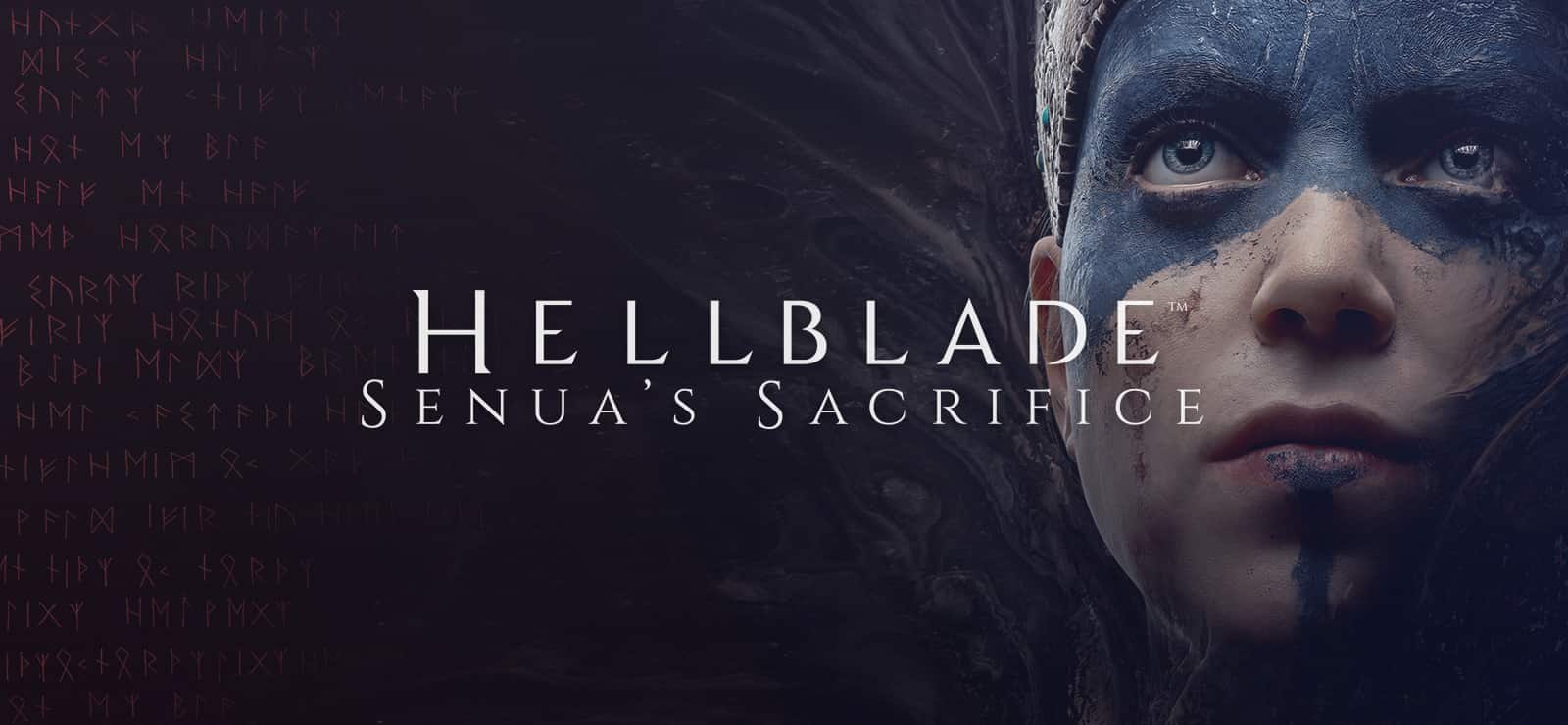
The whole game is an allegory of psychosis, and it’s heavily implied that it’s all happening in Senua’s head. What’s real and what’s imagined or hallucinated is open to interpretation. She’s constantly harangued by the whispered voices of her father, her husband, and her own doubts. The game’s ending is either happy or really sad, depending on how you interpret it.
Coop/Multiplayer
Hellblade: Senua’s Sacrifice is a single-player game.
Overall Review/Final Thoughts
In short, Hellblade is an emotional and thought-provoking tale worth experiencing. It’s not exactly a horror game, but it’s downright unsettling and there is plenty of dark imagery, so dive right in if you like being creeped out.
#6 Hollow Knight: Voidheart Edition (PC and Console)
Hollow Knight is one of the few family-friendly games on Xbox Game Pass that’s truly a high-quality adventure for all ages, so be sure to add it to your must-play list.
Gameplay
Hollow Knight is a gorgeous, hand-drawn, side-scrolling Metroidvania about bugs. You control one particularly bold insect with a tiny sword who can’t resist the siren call of adventure and delves into the ruins of an ancient kingdom, searching for answers to ancient mysteries.
At the beginning of the game, you’re a pretty pathetic weakling, but soon enough, you’ll start gaining new powers and better gear. In true Metroidvania fashion, large areas of the map are locked at the beginning of the game, and you’ll need to revisit them several times as you gain new abilities to see what you can now access.
There are a ton of bosses in the game, and they’re all different. Some are super-fast, others are physically strong, and still others have magical abilities that you’ll need to react to on the fly. To best them all and finish Hollow Knight, you’ll have to master all of your abilities and combine them in creative ways.
Graphics
Hollow Knight is a real treat to look at. Every character and every piece of the environment is hand-drawn—a truly impressive feat that few games even aspire to. Animations are smooth and crisp, and most enemies are somehow both cute and mildly creepy. Visually speaking, Hollow Knight is one of the prettiest games of the last several years, especially within the indie corner of the market.
Story
A mysterious knight arrives in a dreary kingdom which has all but died out entirely. Most of its remaining citizens are tired husks that don’t seem to care about much. As the knight explores deeper into the ruins, he learns that dark forces are protecting a powerful source of madness and corruption. Three different endings are possible, depending on your choices throughout the game.

Coop/Multiplayer
Hollow Knight is single-player only.
Overall Review/Final Thoughts
Games that can appeal equally to kids and adults are rare. Hollow Knight is definitely one of them, and despite its dark and eerie tone, we wouldn’t say it’s scary or inappropriate for young gamers. Make time to play through it at least once before the sequel, Hollow Knight: Silksong comes out next year!
#7 Metro Exodus (PC and Console)
The latest entry in the Metro series is way different from its two predecessors—mostly in good ways.
Gameplay
Metro 2033 and Metro: Last Light are both linear horror-shooters, and they’re fantastic, but because open-world games are all the rage nowadays, developer 4A Games decided to go that route with Exodus. Undeniably, the horror vibe of the previous two games is at least somewhat diminished by allowing you to freely roam huge areas in broad daylight, although some interior locations are still deeply unsettling.
One of the coolest things about Exodus is its crafting and weapon maintenance system. As you roam around deserts, swamps, and frozen cities, supplies are scarce, and proper workbenches are even less common. Your weapons (you can carry up to three) also get dirty over time, and in especially filthy places—like the swamp—they’ll get dirty even faster.
Your backpack serves as a mobile workbench with limited functionality, and you’ll need to periodically find a safe corner to unpack it and clean your weapons or swap out parts. There are several huge locations in the game, and you’ll travel between them by train, looking for a habitable home on the surface far away from Moscow. Whether you use your guns, your wits, or stealth—or all three—to accomplish that is up to you.
Graphics
Metro: Exodus is a great-looking game. Its first-person animations, in particular, are very well-done. First-person games often play as though you’re controlling a floating head, but in Exodus, it feels like you’re in control of a real human body that responds to physics appropriately.
Exodus’s creature design and environmental art also deserve special praise. One area—a dark, rainy swamp crawling with giant radioactive lobsters—is especially gorgeous, in an immersively off-putting way, but the whole game is a visual feast from beginning to end.
Story
Exodus puts you back in the well-worn boots of Artyom, the same protagonist from the first two games. He’s a man on a mission: he firmly believes that his homeland of Russia, which is ultra-irradiated and insanely dangerous after World War III, is not representative of the whole planet and that there is habitable land elsewhere.

He and his friends find a train—a piece of working technology long thought to be extinct—and set out to find a new, cleaner, safer home. Throughout Artyom’s long journey, he’ll encounter new and different mutants and many people, only some of whom are friendly. How you deal with all of those parties is up to you, and your actions will lead you to one of two possible endings.
Coop/Multiplayer
Metro: Exodus is a single-player game.
Overall Review/Final Thoughts
Exodus changes several things about the beloved, tried-and-true series formula, and while its new ideas are largely successful, it does feel less like a horror game than the first two. If you’re willing to play by a new set of rules and sacrifice some scariness in favor of a more general dramatic adventure formula, Exodus is a game you should make time for.
#8 Ori and the Blind Forest: Definitive Edition (PC and Console)
Most Metroidvania games are fairly heavy on combat. If you’ve ever wanted to play one that’s more about exploration and atmosphere, Ori and the Blind Forest is just the ticket.
Gameplay
If you’re someone who plays a lot of combat-oriented Metroidvania games, Ori and the Blind Forest might take a bit of getting used to. Within the game’s first few minutes, it becomes clear that it’s more interested in tugging at your heartstrings than in testing your reflexes. You play as the titular Ori, an adorable little forest spirit who soon partners up with a much older one who acts as a weapon, a puzzle-solving device, and an occasional adviser.
Large sections of the mysterious forest are inaccessible at first; you’ll need to unlock new abilities and gather the right keys to explore them. To the extent that combat happens, it’s usually ranged combat, and you’ll have to dodge enemies long enough for Sein (your buddy) to blast them. The controls and core mechanics are simple, leaving you free to focus most of your attention on the story and artwork.
Graphics
Ori and the Blind Forest is similar to Hollow Knight in that both games feature beautiful hand-drawn artwork, but Ori’s is more reminiscent of watercolors. At the beginning of the game, Ori’s forest home is dark and dying, but as you clear areas and revive parts of it, dark blues and blacks give way to vibrant green. Visually, the game is a stunning achievement.
Story
We’re going to deliberately avoid mentioning an important event that happens at the beginning of the game to preserve the emotional experience, so all we can say for now is that your home is dying, but you have a chance to save it. The ancient tree that watches over and protects the forest uses the last of its strength to send Sein to you, hoping that the two of you will be able to purge the corruption strangling the forest. Don’t let him (it?) down!
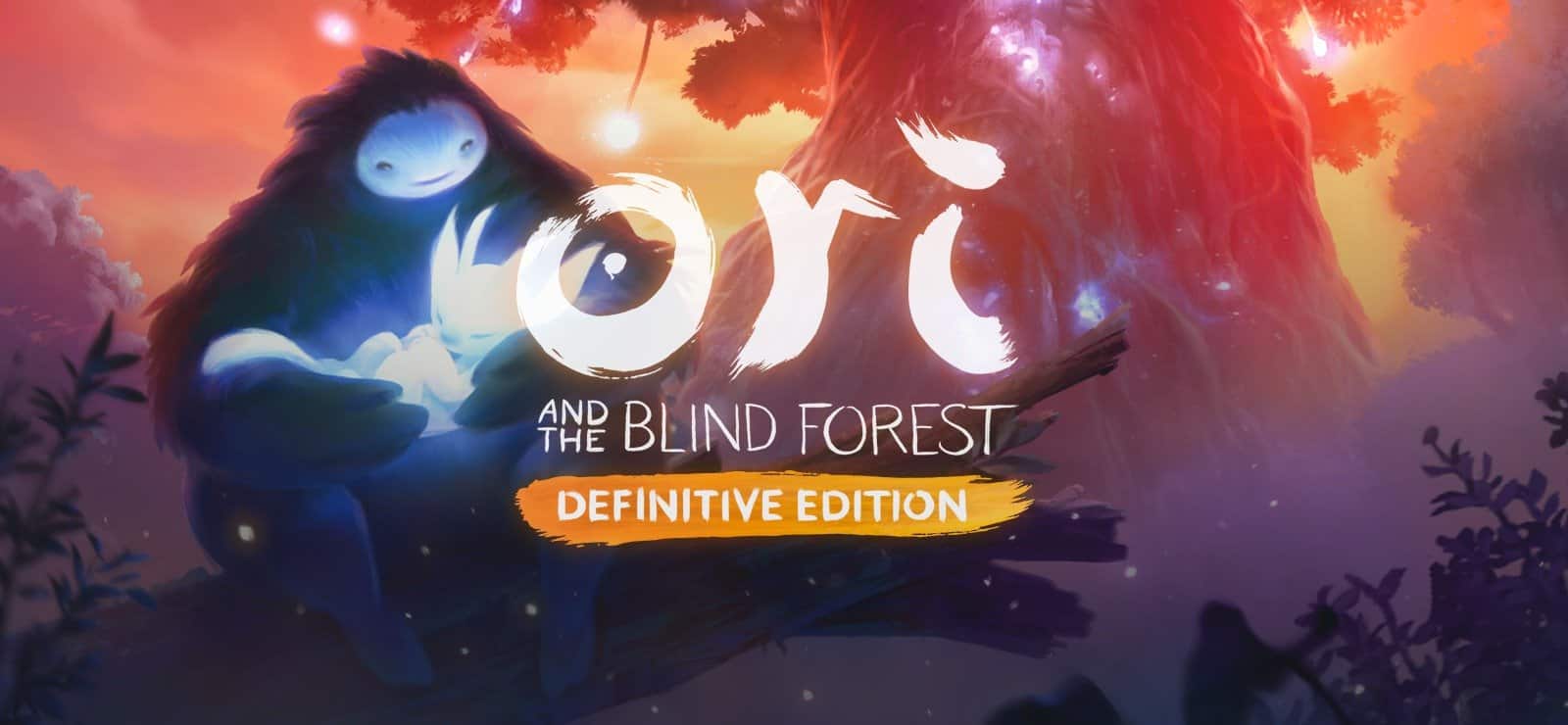
Coop/Multiplayer
There’s no official multiplayer mode in Ori and the Blind Forest, but if you’re willing and able to buy the Steam version, there’s a fan-made multiplayer mod in the works that looks pretty cool.
Overall Review/Final Thoughts
If an exploration-heavy Metroidvania that’s alternately sad and comforting sounds fun to you, Ori and the Blind Forest is a can’t-miss game.
#9 Quantum Break (Console Only)
Given how well Quantum Break’s unique blend of video game and television show worked out, it’s genuinely surprising that nobody else has done it since.
Gameplay
Quantum Break is a third-person shooter where you also have time-control powers. It’s been done a few times before, but Quantum Break is mostly story-driven and the gameplay takes a backseat to some extent. Powers at your disposal include super speed, temporarily freezing time in a certain radius, stopping enemy bullets in midair, and an ability that basically equates to teleportation.
Throughout the course of the campaign, you’ll watch a total of six half-hour TV episodes featuring the game’s characters played by real actors. These episodes fill in parts of the story that you sometimes don’t directly participate in, and their production values are top-notch. What’s more, your choices during the game can even influence the TV episodes and change them in small ways.
Graphics
The in-game graphics during the playable sections look slightly dated, but we have to assume that a huge portion of Quantum Break’s budget was spent on filming the TV episodes, so it’s understandable that the graphics aren’t the $100 million affairs that many gamers have gotten so accustomed to.
Story
You play as a dude named Jack Joyce, a guy in his late 30s who’s had a few run-ins with the law, but nothing too terrible. At the start of the game, he reconnects with Paul, his former best friend. Paul is also Jack’s brother’s coworker—the two of them are quantum physicists that have been playing around with time travel.
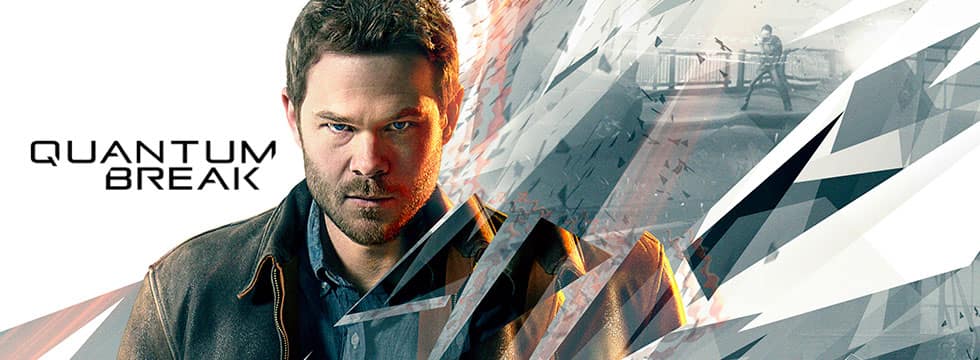
Long story short, Jack and Paul get doused with Time Particles™ when an experiment goes awry. A countdown starts, and when time runs out, time itself will collapse. Paul has some weird ideas about how to deal with the crisis—weird enough that Jack feels compelled to stop him. So yes, expect some cool battles between two Time Fighters.
Coop/Multiplayer
Quantum Break is single-player only.
Overall Review/Final Thoughts
Quantum Break is a well-written game (and show) with intriguing time power mechanics and reasonably satisfying gunplay. Above all, it deserves a lot of credit for taking a big risk to try something new by blending a game and a TV show into one experience. It’s worth playing/watching at least once.
#10 Tomb Raider: Definitive Edition (Console Only)
If you’re looking to play a Tomb Raider game for the first time in 2020, the reboot from 2013 is our top pick. Longtime series fans who missed the reboot will love its updated mechanics and the fact that its spirit stays faithful to the older games.
Gameplay
Tomb Raider is a third-person action/exploration game that tells the (yet again) retconned and reimagined origin story of Lara Croft, famed explorer, archaeologist, and world-saver. As Lara, you’ll go toe to toe with both wordly and supernatural foes in a battle to solve the mystery of Yamatai and escape it alive.
At the game’s outset, Lara has nothing but the ripped and bloody clothes on her back. Soon enough, you’ll find a poorly crafted bow, and later on, you’ll get some real guns, too. Crafting is a core component of the rebooted Tomb Raider experience; you won’t survive without scavenging for plants, animal skins, and mechanical parts, and using them to make various useful items.
The island is divided into several major sectors, each of which conceals optional challenge tombs and a reasonable number of collectibles in addition to the main story objectives. There’s a lot of forced combat, which is arguably the game’s weakest element, but if you don’t mind that or can power through it, Tomb Raider is an otherwise fantastically well-designed adventure game.
Graphics
Six years after its initial release, Tomb Raider has held up well in the graphics department. The environments—such as mist-covered forests and crumbling WWII bunkers—are inspired, but Lara’s character model really takes the cake. Everything about her, from the condition of her clothing to her injuries to her detailed facial expressions, visually supports one of the best video game character arcs in recent memory.
Story
During the course of a relatively routine expedition to a forgotten island off the coast of Japan, Lara’s ship is destroyed by a phenomenally powerful storm, leaving her and her friends stranded. The survivors soon discover that they aren’t alone on Yamatai; there’s a batty cult skulking around, and its members are people previously shipwrecked by storms (that happens a lot in this area, and there’s a reason for it).
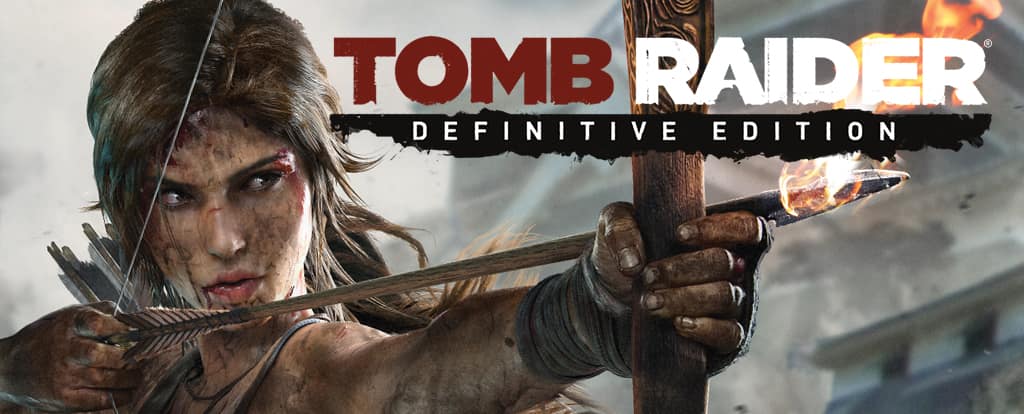
When Lara’s best friend is kidnapped by the cult to be sacrificed to a vengeful ancient goddess, Lara correctly decides that the time for polite dialogue has passed and that she’ll need to kill every last dirty cultist that gets in her way. The full measures of her athleticism, intelligence, and courage will be needed if she’s to save her friends, prevent the rebirth of a sadistic deity, and get home alive.
Coop/Multiplayer
Tomb Raider features three team-based PvP multiplayer modes: a standard Deathmatch mode and two mildly creative twists on Capture the Flag. If you’re into those sorts of game modes—and if you can find anyone to play with on the mostly dead multiplayer servers—they can be decently fun, but they get old fairly quickly.
Overall Review/Final Thoughts
I love the Tomb Raider series. I own every game ever released, and given that I tend to prefer pre-2005 games over many newer ones, it’s shocking even to me that I think the Tomb Raider reboot is the best game in the entire franchise. Whether you’re a series newcomer or a seasoned tomb-raiding veteran, you simply must play it.
#11 Strange Brigade (Console Only)
Indiana Jones kind of fights supernatural entities sometimes, but what if he actively sought them out in ancient ruins and brought up to three friends with him? Strange Brigade is the strangely satisfying answer to that question.
Gameplay
This is a third-person coop adventure game in which you take on the role of one of four members of the titular Strange Brigade, intrepid 1930s explorers who loot carefully explore ancient ruins, lift curses, and exorcise demons.
Each character starts with a different pair of weapons, but all weapons can eventually be unlocked for all characters. There are also amulets—unique artifacts that grant you magical superpowers—and each character has four available to them, each of which corresponds to an ability not available to the other three characters.
Over the course of nine missions, you’ll travel around ancient African ruins to right magical wrongs and put reanimated corpses back in the ground. Primary weapons are powerful but have limited ammo, whereas secondary weapons are weak but can be used infinitely. You can use your amulet power once it’s been charged (by defeating enemies), and there are simple puzzles to solve and traps to avoid, too.
Graphics
Strange Brigade is hardly an ugly game, but it’s not as high-def as most larger AAA titles. Character models are slightly stiff and animations are slightly clunky, but the environment art is quite nice. To be clear, though, I’m the last person on the planet to criticize a game for not being photorealistic in 8K resolution. It looks fine.
Story
From their dirigible-based office high in the sky, the Strange Brigade travels the world and intervenes wherever evildoers would think to use magic to advance their evil agendas. Despite the time period and clear ties to Indiana Jones, there are no Nazis (that we’ve seen—we’re only about halfway through the game so far).

The campaign takes place somewhere in Africa, where a well-meaning but largely incompetent archaeologist inadvertently unsealed the tomb of a malevolent goddess named Seteki, and it’s up to the Strange Brigade to put her back to rest—permanently.
Coop/Multiplayer
You can play the 8–12-hour campaign solo or with up to three friends, and there’s also a horde mode in which your group fends off endless waves of enemies as long as you can.
Overall Review/Final Thoughts
Once you finish the main campaign and try the horde mode once or twice, there’s little reason to go back to Strange Brigade, but it’s a rip-roaring good time while it lasts—especially with friends.
#12 Rocket League (Console Only)
To each his own, but personally, I find cars and soccer both to be rather boring. Combine them, though, and you have my attention.
Gameplay
As is the case with many great games, Rocket League’s core concept is simple: put a bunch of souped-up cars on a giant soccer field and task the drivers with getting a ball into the other team’s goal by any means necessary.
There are quite a few different cars to choose from, but other than variations in speed, acceleration, and handling, nothing sets them apart—no cars have unique abilities. All cars can jump (somehow) and gain temporary speed boosts by driving over flashing arrows, just like real life. Other than that, all you need to do is make sure your team has more points than the other team does after five minutes.
Graphics
Rocket League is rather cartoony, which, of course, isn’t a bad thing. It’s brightly colored and has a visually snappy art style that complements its frantic gameplay. At least by modern standards, many of its textures are not what you would call exquisitely detailed, but that helps keep developer Psyonix’s costs low and the game itself performance-friendly.
Story
The story of Rocket League is that there isn’t one. Just have fun crashing into each other.
Coop/Multiplayer
All Rocket League matches support up to eight players in two competing teams of four. Other than brief tutorials and training matches, there is no single-player content.
Overall Review/Final Thoughts
Rocket League is a great game for when you’re feeling too lazy to do a lot of strategizing, but could still go for some casual (and often hilarious) competition. Despite being four years old, the game is still super popular and the lobbies are always active, so you should never have trouble finding a match.
Final Verdict
Picking just one game as our favorite from the nearly 300 options included with the Xbox Game Pass was tough. After much deliberation, we have to go with the 2013 Tomb Raider reboot, but it was razor-thin. It’s fun to play, beautiful to look at, and the story is unique and intriguing. Most noteworthy, Lara’s transformation from naive college girl to a courageous adventurer is superbly well-done and simply must be experienced firsthand.
For horror fans, Alien: Isolation is a no-brainer. It’s a tense and horrifying thrill ride from beginning to end that finally does long-overdue justice to the Alien franchise. If fast-paced action games are more your speed, Devil May Cry 5 is sure to sate your demon-killing appetite.
If you’re looking for something to play with your friends, Strange Brigade and Rocket League are both solid choices. And if you like Metroidvanias (or just don’t like a lot of violence or scary stuff), Hollow Knight and Ori and the Blind Forest are both excellent family-friendly games that adults can enjoy too.
There you have it! Are there other games on Xbox Game Pass that you think deserve special attention? And before you go, don’t miss our preview of the top ten upcoming Xbox One games or some outstanding Xbox One exclusives!
Related: Best Xbox 360 Games